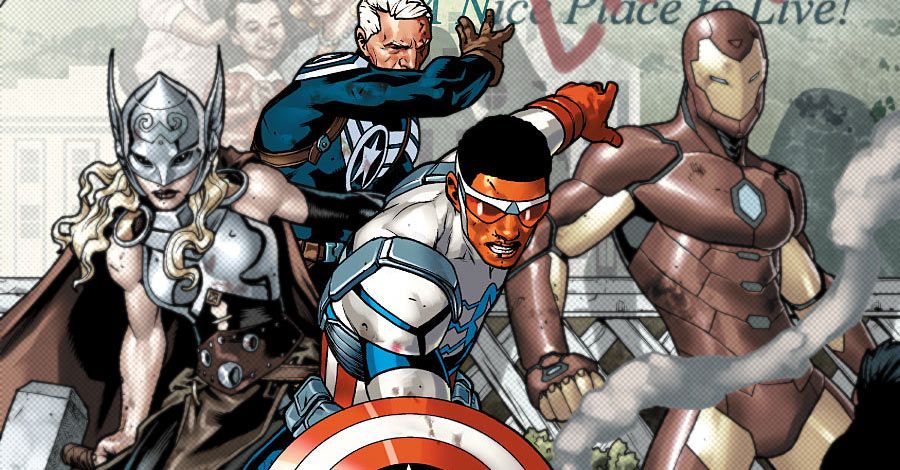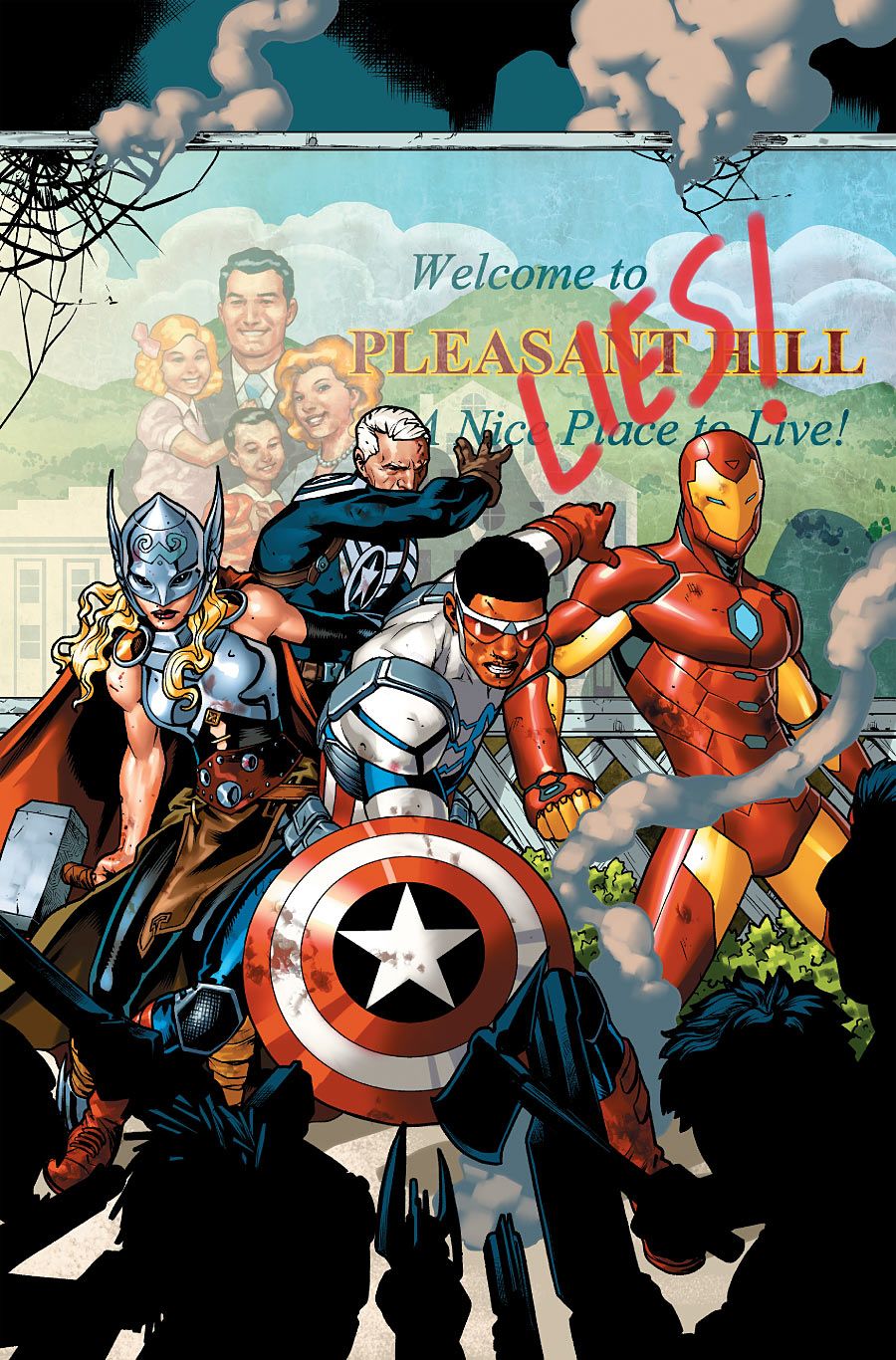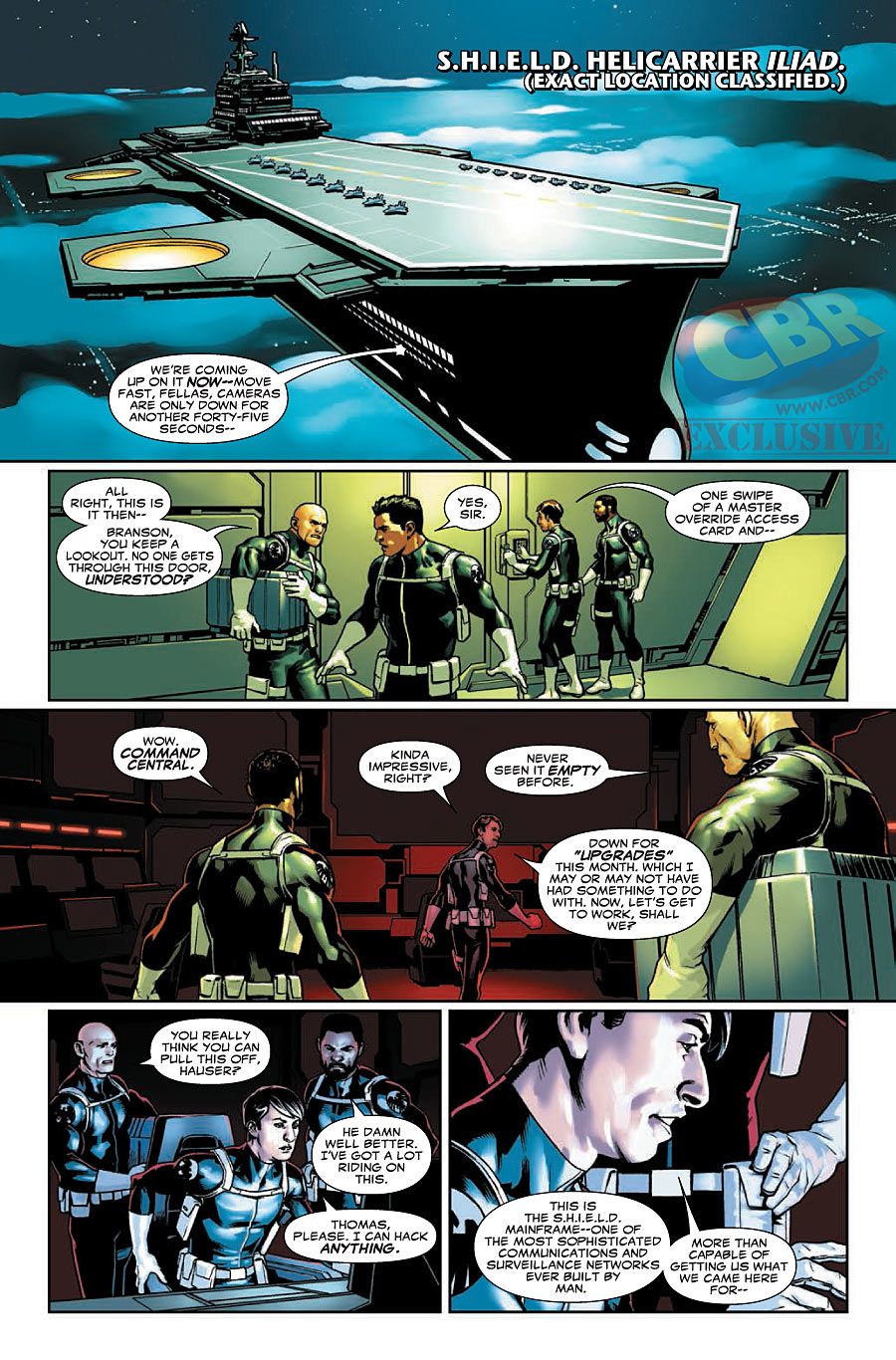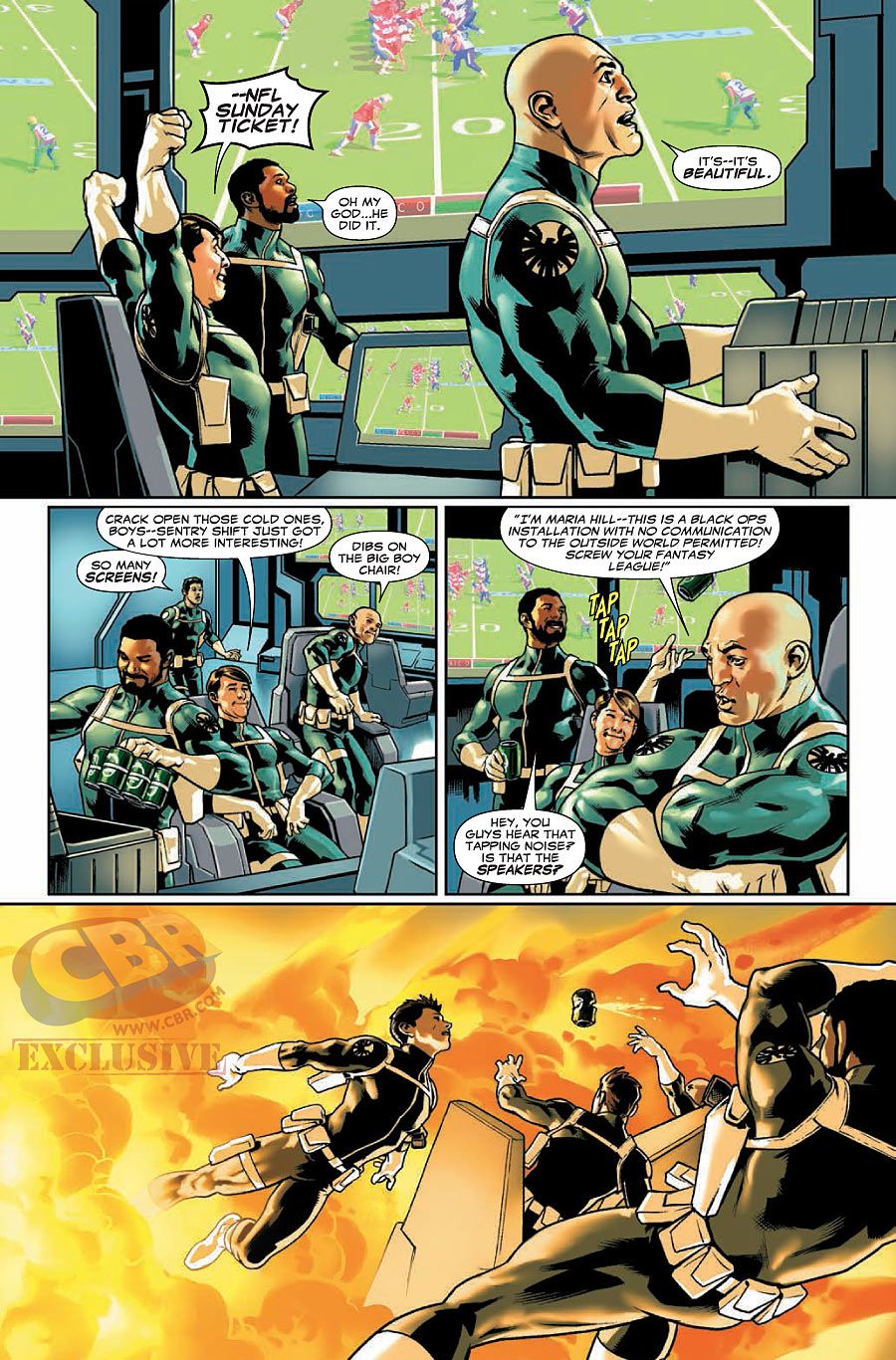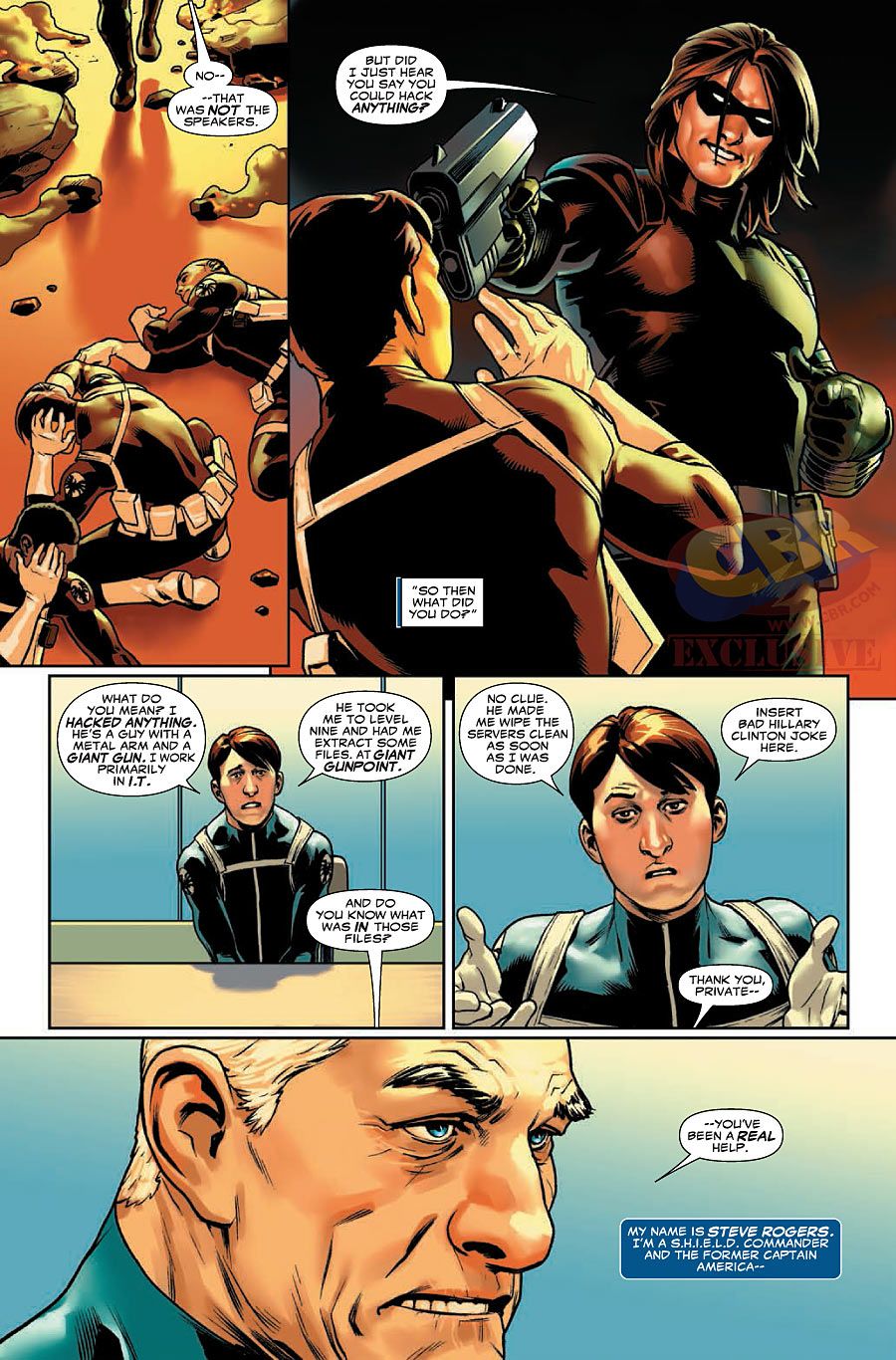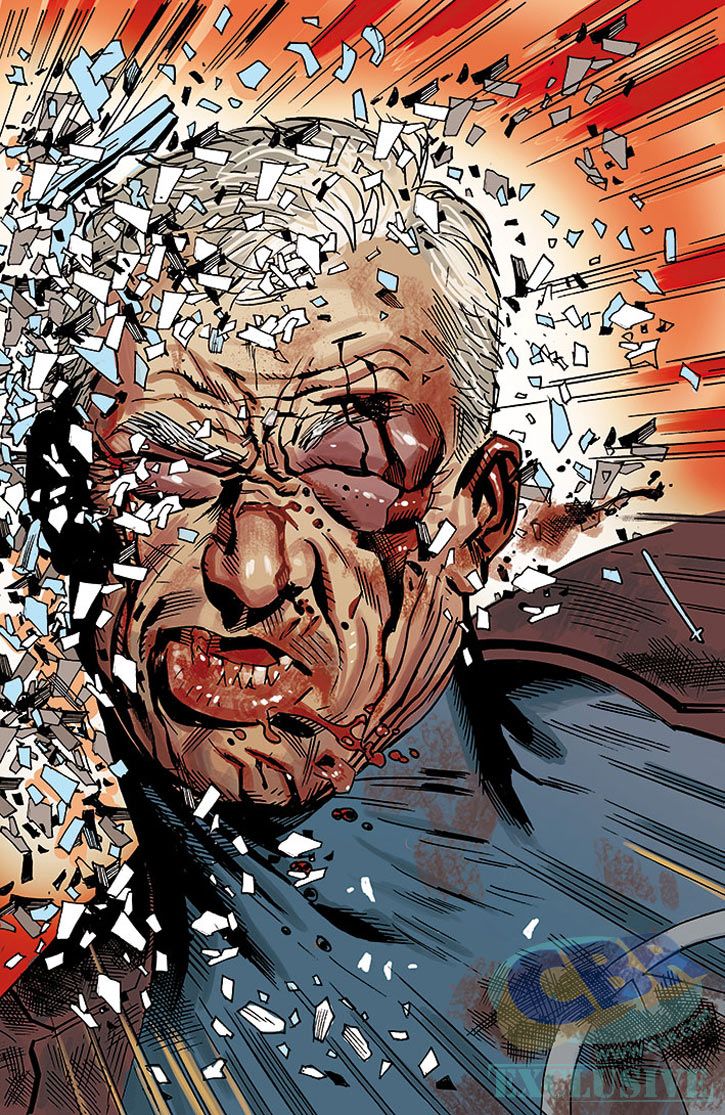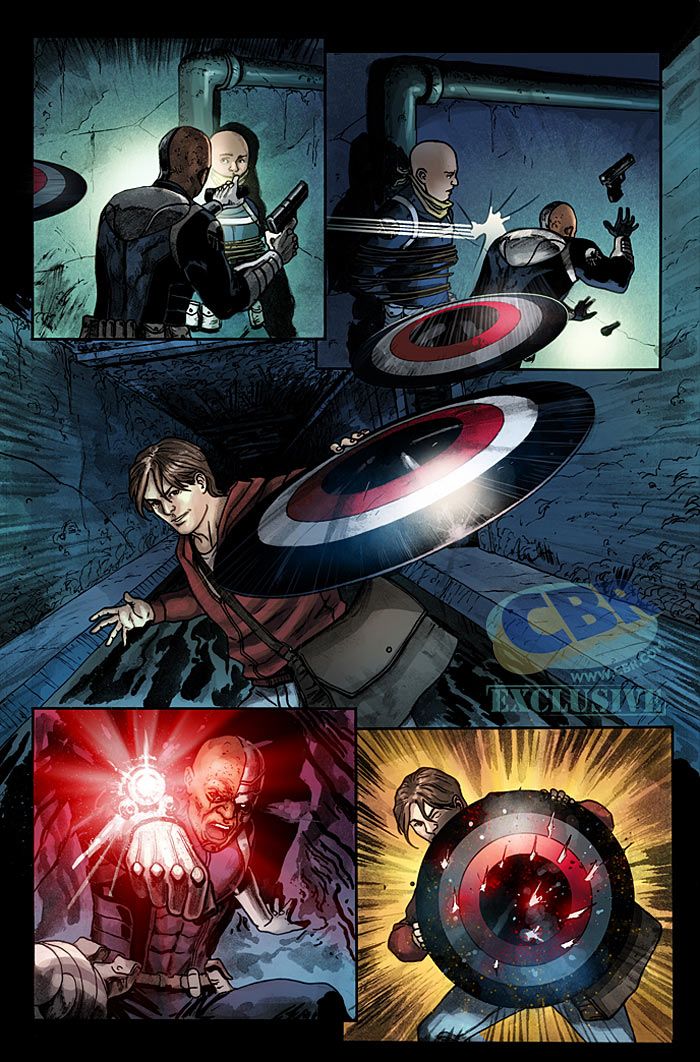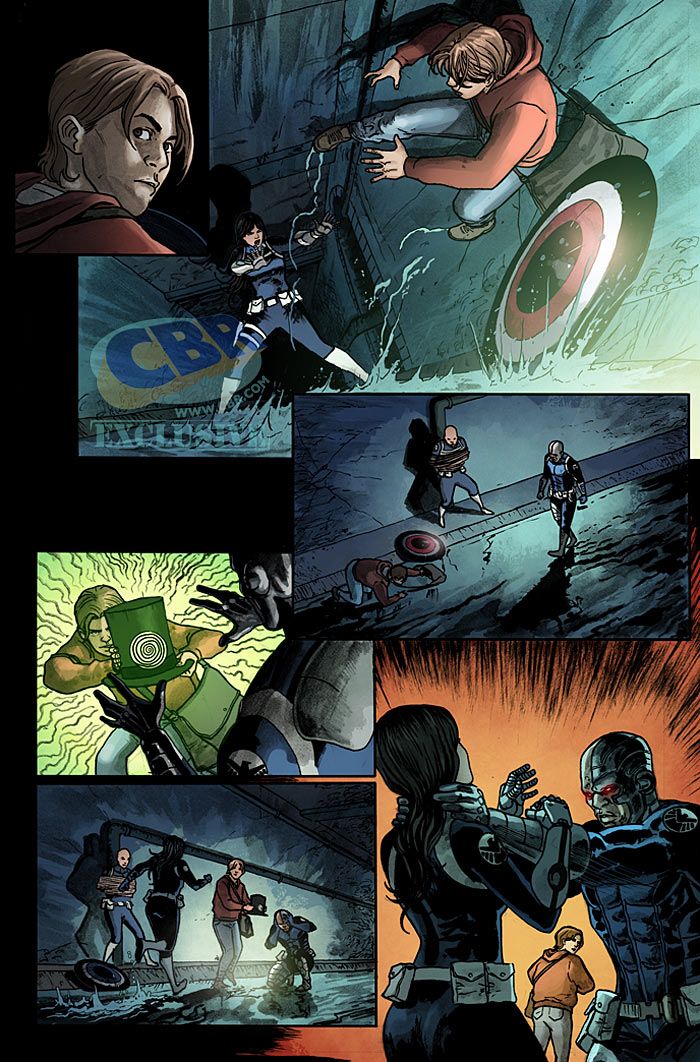SPOILER WARNING: This interview contains spoilers for "Avengers Stadnoff: Assault on Pleasant Hill Alpha," on sale now.
The bustling metropolis of Manhattan has been the focal point of the Marvel Universe pretty much since its inception, but for the next several months, the Big Apple's role is going to become eclipsed by a sleepy little town in Connecticut.
Of course, Pleasant Hill is an illusion. Beneath the veneer of classic America lies a S.H.I.E.L.D-designed maximum security prison for the world's worst super villains. Using the reality altering power of the Cosmic Cube to convince its prisoners they're residents of a Norman Rockwell inspired small town, the facility has remained a secret from Marvel's super hero population -- until.
"Avengers: Standoff" Answers Questions, Asks More on Road to "Civil War II"
Writer Nick Spencer and artist Mark Bagley introduced readers to the titular town/prison in "Avengers Standoff: Welcome to Pleasant Hill," a special that served as a prologue to a crossover event running through the Avengers family titles. That first chapter closed with two of the towns villainous residents, Baron Zemo and the Fixer, reclaiming their memories and identities. In this week's "Avengers Standoff: Assault on Pleasant Hill Alpha," Spencer and artist Jesus Saiz kicked the crossover into high gear by having Steve Rogers, the Winter Soldier and Sam Wilson discover the existence of the S.H.I.E.L.D. prison right as Zemo and his army of villainous inmates attacked the facility.
CBR News: Now that the prologue and "Alpha" issues of "Standoff" are out, readers can see that you were building towards this from the very first issue of "Captain America: Sam Wilson."
Nick Spencer: Yeah, the real genesis of it began when we were plotting out "Captain America: Sam Wilson" and figuring out where everyone was on the map and how they were gong to factor into the story. It was the first time I ever had to plan for a book that sort of has its own universe and orbit. You're not just figuring out what Sam is up to -- you have to figure out what Steve Rogers is up to. You have to figure out what Bucky is up to, what Sharon Carter is up to, what S.H.I.E.L.D. is up to, what the Red Skull is up to, and Baron Zemo is up to. There are all these players that you have to consider. They're often in other books and have had books of their own previously, so you have to make sure that it all meshes in terms of continuity and the grand plan.
Obviously, one of the biggest questions that came out of that was, when does Steve de-age and become Captain America again? That was looming pretty large all throughout the planning stage, and I felt pretty strongly that the 75th anniversary was the time to do it. It was maybe a little sooner than we originally talked about, but it just seemed really wrong to leave that on the table. Then, obviously, you have the movie, "Captain America: Civil War," coming out in May. It seemed like there was an opportunity to bring Steve back in a big way in the spring.
RELATED: Spencer Explains Steve Rogers' "Captain America" Return, Sam Wilson's Status

From there it really became, "Okay, how does he come back? How do we make the anniversary the biggest story that we can make it?" Tom Brevoort mentioned that he had always wanted to do an Avengers line event. That was something that they hadn't been able to do before, and he really liked those kinds of crossovers. It just became this natural thing that was a great story to plug in there.
It became an event, which is nice, because I figure people have a lot of preconceived notions about how events come about. A lot of times, there's a perception that the cart comes before the horse. In this case it really was a story that we already had on the table, but we felt like we could blow it up, make bigger and involve a lot of other books. It happened pretty organically.
The Cosmic Cube being a focus of this story also seems natural, since it made its debut in "Captain America."
Exactly! I wanted to do something that was inline with the history of the character and involved things we'd seen before in Cap books, and the Cosmic Cube has certainly factored into a number of Cap runs in a major way. It's a favorite of mine. I've been talking about them since I was working on "Secret Avengers," way back when. It all made a lot of sense for the Cosmic Cube to play a role here.
We got the revelation of what Pleasant Hill was and that it housed prisoners like Baron Zemo in the prologue, and in the Alpha issue, Zemo makes a big move. One of the things I love about Zemo is his unique perspective. What's your sense of him and how he views the world?
Right now, Zemo is very, very angry -- I think a lot of readers would argue that he's angry for a very justifiable reason. Hhis goal is very simple: he wants to punish the people who did this to him. He wants to shame them for doing this to him. He wants to expose them to the world.
It's a great environment for him to be absolutely ruthless, because everyone around him is either another prisoner or one of his captors. He can be really cruel here in a way that doesn't contradict a lot of the stuff we had established with the character. This is sort of evil Zemo unleashed, because he's in a place where he can be that.

Zemo is a character I really love because he's always had a lot of nuance. He's a character that straddled a lot of lines, but in this, the leash is off. There's just his temper, and not much else.
He's behaving emotionally rather than logically.
Yeah -- if you believe what he believes, which is, this prison was an unconscionable thing and a severe violation of any kind of notions of civil liberties, then they have what's coming to them. Zemo is certainly going to put that to the test.
While Zemo was building his army, Sam Wilson and Steve Rogers were finding out about the prison from two separate sources. Sam learned about the facility via Rick Jones, who was revealed to be the hacker/informant known as the Whisperer, a character you introduced back in "Captain America: Sam Wilson" #1. What made you want to bring Rick back into Captain America's world and use him in this way?

When we came up with the Whisperer, initially we did not have an identity. I knew that I wanted this mystery hacker character, and I knew that I wanted him to expose the Kobik program, and we had a number of people that we thought it could be. It was actually James Robinson and Mark Waid who lobbied very effectively for it to be Rick.
It took me a little while to consider it, but what I liked about the idea was, it brings back a character who was a huge part of the Marvel Universe for a very long time. I think it's always good to keep him in the spotlight and remind people of his connections to many heroes. There was that, and then there was the opportunity for future stories, which is really what sold me. There were things down the road that made Rick the absolute perfect fit for the job. Once I came around on James and Mark being absolutely right, he's the perfect choice.
[Spoilers] Return in "Avengers Standoff: Welcome to Pleasant Hill" #1

Speaking of Sam, the sequence of him fighting the eco-terrorist known Green Skull (a fun Rick Remender creation) is a good indication of the tone of "Captain America: Sam Wilson," for readers who don't normally follow that book.

Definitely. One of the things that's fun about "Standoff" is, there are going to be a lot of people who pick it up that haven't read Sam's book. We got a few pages here to kind of shine a spotlight on that, for people who might want to go back and check it out. Certainly, your enjoyment of "Standoff" is going to be greater if you've read "Captain America: Sam Wilson" #1-2, which deal a lot with the Whisperer and the conflict between Sam and Steve. It was a good scene to get in there. I really love that character; I think he's a lot of fun.
I got a ton of flack from Fox News when I had the Sons of the Serpent on the border, and I would just like to point out that we are equal opportunity in the sense that, here's a villain with what you could consider an extreme left wing ideology and we're having some fun with that, too. It was fun to get one of those in there.
Bucky Barnes, the Winter Soldier, was Steve Roger's informant that something strange was afoot at Pleasant Hill. Does what Bucky's doing here connect to his recent role as the "Man on the Wall," protecting Earth from alien threats?
Yeah. Another good reason for the involvement of the Cosmic Cube is, however we brought Bucky back into world of Captain America, it was important to me that it be something that was in line with his existing mission statement; with his job as the Man on the Wall. Certainly, a sentient Cosmic Cube is a big deal for Earth and represents a major threat. It seemed like something that was more than worthy of Bucky getting involved.
Obviously, there's going to be a lot of exciting things for Bucky coming out of "Standoff." We already know he'll be leading the new Thunderbolts. He has a major role to play in some big developments in the Marvel Universe over the next couple of years.
RELATED: Zub's "Thunderbolts" Rise From the Ashes of "Avengers: Standoff" with Winter Soldier
Steve's conversation with Bucky lead to his confrontation with S.H.I.E.L.D. director Maria Hill, a character you really seem to enjoy writing. She's very charismatic and persuasive in the issue, even in the scenes were she's talking about things that sort of horrify me.
She is, without a doubt, one of my absolute favorite Marvel characters to write. I would totally write 20 pages of just Maria Hill being a smart ass to various super heroes, month in and month out. I have pitched it numerous times. [Laughs]
Her world view is something that sounds harsh within a comic book, but would sound completely plausible if this were the real world. That's what's great; she gets to hold up that mirror and say, "Look, we're in a funhouse." [Laughs] She's the one that points out that all of this is crazy. Maria Hill's dream is our world. That, to me, is the essence of the character. What Maria Hill wants is the world that we live in not the world that these heroes live in. So to constantly have somebody who's end goal is to get to normal is really great.
She's also really clever. She's not cowed by Captain America or Iron Man. She's not impressed by the Avengers. She finds the whole thing ridiculous. She's more than happy to work with them in the sense of getting them to do the things that she wants, and she's willing to make compromises when their interests align. She is not a part of them, though. She is not of them.
She just makes every story that she's in better. I think she's one of the best creations at Marvel of the last generation. Brian Bendis deserves an enormous amount of credit for that.
Listening to you talk about her, I'm reminded of the way some characters used to view Nick Fury Sr. They were never really happy when he turned up, but they had to deal with him.
I think Fury, at his best, had that separation, but there was always closer relationships and closer ties. There were always sort of exceptions that he made. Captain America was an exception, he was okay. What's great about Maria is, nobody is okay. None of this is all right. It's like, "Put on normal clothes, and what's your real name? Then, we're okay." She has no tolerance for this stuff, and I think the harder that line is maintained, the better a character she is.
Assisting Maria with maintaining Pleasant Hill and the sentient Cosmic Cube that empowers it is the Marvel Universe version of Doctor Eric Selvig, who originated in the Marvel Cinematic Universe where he's played by actor Stellan Skarsgård.
Eric made his Marvel Universe debut in the "Welcome to Pleasant Hill" prologue. We get to see him be himself a little more here, where he doesn't have to maintain the ruse.
I've been lobbying for this character and to work him in this fashion for probably about three years, since "Secret Avengers." So many of these ideas and concepts that went into Pleasant Hill, into Kobik, and Selvig's role, are things that I've had in my back pocket from that run with Luke Ross, the Marvel NOW! "Secret Avengers" run, that we didn't get to work into that. In fact ,if you go back to even "Secret Avengers" #2, our second issue of that run, there's a shot of Kobik. There's some nice foreshadowing that, thankfully, we didn't have to drop as a subplot.
Artist Jesus Saiz really nailed the character's emotions in this issue. Is what he's doing here indicative of what we'll see from him in your collaboration on the upcoming "Captain America: Steve Rogers" book?
Absolutely. I think Jesus is turning in the work of his career right now. He's doing absolutely phenomenal work, and I don't think that this issue could look better. I was so impressed with the pages as they were coming in.
He's a really gifted storyteller who can pack in a lot of information while making everything still feel really big. He has great layout instincts, and does really great body language. He really brings a script to life in the best way. I love his work here, and I'm loving his work on "Captain America: Steve Rogers" right now. It's worth picking up for that alone.
From here, you hand the "Standoff" baton to writer Marc Guggenheim who provides the next installment in his "Agents of S.H.I.E.L.D." series. Then you come back later in March with "Captan America: Sam Wilson" #7. How does it feel to be working with all these characters and creators on this big story?
It's really great. That was a big part of the challenge and fun of this. I sort of tee this up and everybody gets to play with it for a month. Then I come back and do the Captain America 75th anniversary issue at the end of the month. Then it's everybody's to play with again before I come back and wrap everything up. It's really an interesting and invigorating way to do this. Lots of things can develop and build in the time between my scripts, so I get to respond to that stuff. It's great.
I'm really impressed by the quality of a lot of these stories and issues that play out on this stage. We gave folks a lot of different stuff to play with. Some books will just focus on the Whisperer and S.H.I.E.L.D's pursuit of him. Some will focus on these villains that have been prisoners in Pleasant Hill. Others will be focused on the S.H.I.E.L.D. side of things and the secrets that Maria Hill has been keeping. There's not a predictable shape to the issues. A lot of people were asking, "What are the essential issues?" Or, "What's the through line?" It really doesn't work that way. It's really going to depend on what parts of the story interest you the most. I like that there's a lot of variety here.
Everybody tried to write their issues so you can pick up what you like, and for the most part you should be okay.
Speaking honestly, though, I know that it's a big outlay. I understand that you can look at a checklist and be like, "I read a few of these books. I don't read the other books," and everybody is deciding what to put on their pull list. What I'll tell you, though, is this can be a fantastic opportunity to sample some really good books that you maybe haven't been reading. Everybody really did put their best foot forward, and I'll single one out: I thought Josh Williamson did a phenomenal job with his issues of "Illuminati." For people who aren't reading that book, this is a great opportunity to pick that one off the shelf, give it a shot, and maybe fall in love with a bunch of characters that they hadn't been paying attention to

The other thing is, seeing how it all fits together as a whole will greatly enrich the experience. I think people who do that, people who go all in, will really have a lot of fun with this. While I know it's a bit of an extra outlay for some folks I would recommend reading it. I think overall, it's worth it.
"Avengers Standoff: Assault on Pleasant Hill Alpha" is on sale now from Marvel Comics.

